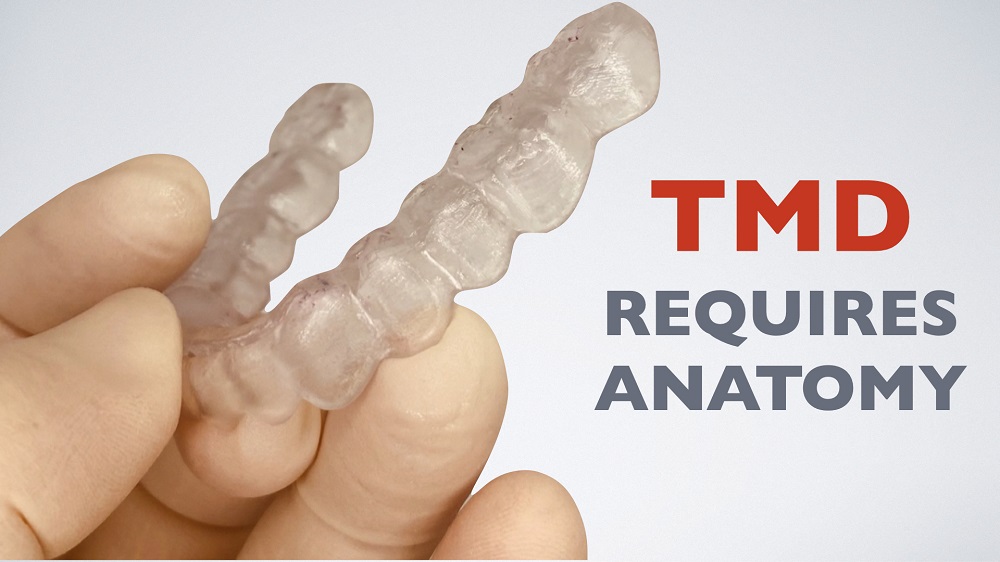Please see blog 1- 4 in this series for the rationale and appliance design choice when deciding on which type of appliance to make in the 3Shape Design Studio.
What if you have a Temporo-Mandibular Disorder (TMD) patient who is symptomatic? TMD patients are the most challenging and complex cases to treat. If you choose to treat these types of patients, the number one thing to remember is to design an appliance that supports the jaw joint.
The key to treating TMJ disorder patients is to understand the condyle and articular disc position and extent of degeneration in the jaw joint. CBCT and MRI are the foundation for helping me diagnose correctly and helping me establish the vertical I want to create in the appliance design to help these patients get out of symptoms quickly.
With these types of patients, we need to know if we are dealing with muscles, joints, or both. We also need to be clear with the patient regarding the purpose of the appliance and I want to make sure the patient understands what the appliance does, and doesn’t do. And then we want to know the outcome of this therapy - is it the reduction of wear on teeth, or a decrease in symptoms, or is the outcome to simply establish the optimal jaw position so that we can move to restore this patient later on.
If I have a patient where I am changing the jaw position, and I have established where she needs to be in order to be pain-free, this appliance will not only be used for symptom resolution, but also as the guide for the next phase of treatment so we can restore the bite in this position permanently and hold the patient there long term. In these patients, I will design an anatomic orthotic which will contour and mimic teeth to allow movement in all direction and provide vertical, horizontal, and lateral support in chewing, speech, and at rest. This type of appliance requires much more time, detail, technology and attention to detail.
The basics of design in 3Shape Splint Studio software includes raising to opposing, canine guidance, anterior mandible re-position, and detailed posterior anatomy to allow lateral jaw movements. After sending and printing this appliance in your Formlabs 3D printer, additional fine tuning is often needed in the patient’s mouth to account for the finite movements in lateral and excursive and follow-up to ensure symptom resolution.
– Written by Dr. Agatha Bis




